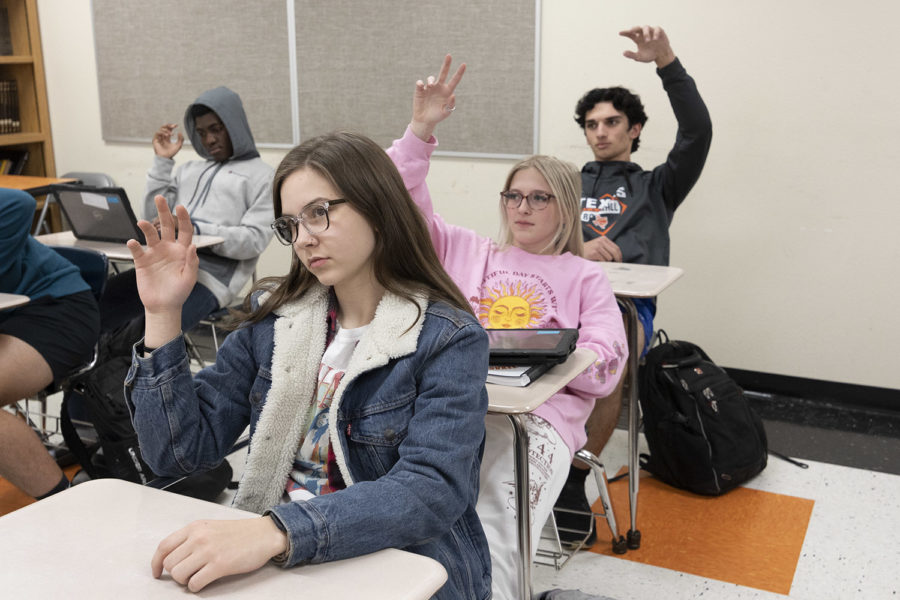Kagan and you
New learning strategies present a disconnect between what is given and what is needed
Photo by Truth Dukes
Juniors Zoe Vanderhoof, Darbi Davis and Brendan Allred participate in “hands up for understanding.” Students and teachers alike share mixed feelings over the newly integrate Kagan strategies.
January 24, 2023
All most teachers want from their students is effort and a willingness to improve, all done in the name of a brighter future. The way in which each educator chooses to lead their class is unique to them and them solely.
However, with a recent visit from the Kagan Foundation, students at THS saw a brief introduction to Kagan strategies and how they may dramatically alter the future of education.
The Kagan strategies are a set of guidelines that a teacher can follow to streamline the process of teaching down to a perfect sequence. Every class should in effect be the same or with very little variation and said class will be fit for any and every student.
These strategies place heavy emphasis on collaborative learning and replace internal competition between students with a strictly cooperative relationship. It additionally forces students to communicate with each other and relay information between themselves and the rest of the class. In theory, students will build stronger relationships with their peers and learn more as a result of this forced interaction.
The truth, however, is much less exciting as the heavy limitations of Kagan’s strategies shine far brighter than any of its benefits. The fact that Kagan strategies were made with primary schoolers in mind holds it down immensely when the question involves a level of education higher than what it was immediately made for.
Both the concept and execution of Kagan strategies are questionable when applied to high school-level classes and students of any kind. More often than not, the strategies feel condescending and the language it uses is clearly directed toward a younger audience; the benefits it provides are also debatable at best and are actively detrimental at worst.
Forced interactions induced by Kagan strategies initially seem fine until it runs the chance to disrupt the momentum of a class and the entire lesson screeches to a halt. The forced discussion that it facilitates ends up taking valuable time for discussions that have actual academic value.
Running this risk also returns little value as the greatest advantage Kagan strategies provide is nullified by the rigor of most high school curriculums. Having what in essence is multiple reviews throughout the class sounds appealing, but those reviews eating into limited class time is a large drawback for most teachers.
The Kagan Foundation and the techniques they preach are no doubt effective given they are applied correctly. These techniques are geared toward younger students, students who may lack a certain discipline that forms later in life. Preaching discipline and cooperation to a class of high school students is no different from preaching the gospel to a choir; a pointless task to fit a technique that serves no purpose when shooting above its pay grade.
















